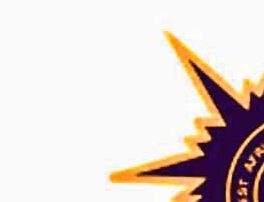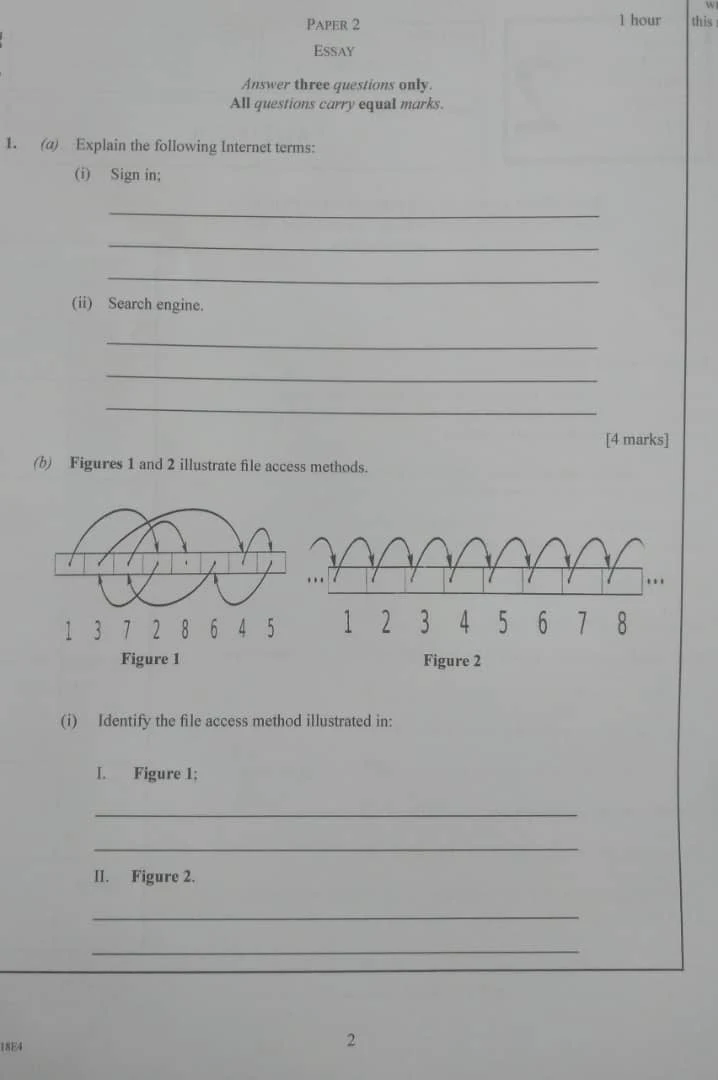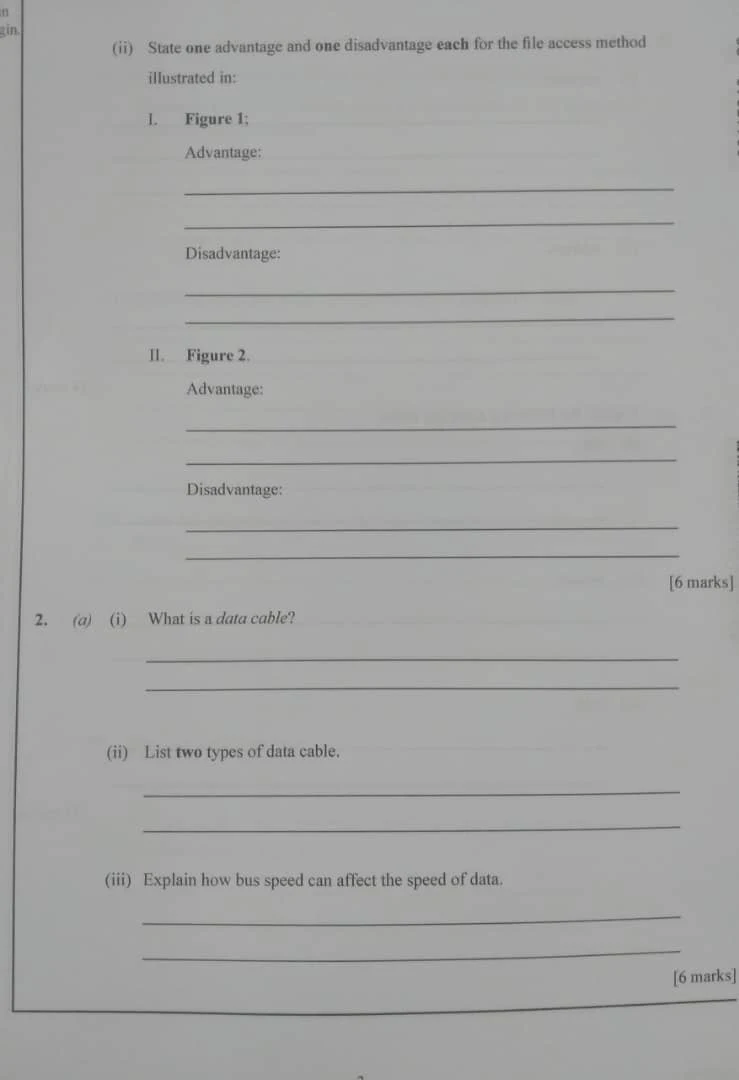Get 2024 WAEC Computer Studies OBJ (Objectives) and ESSAY (Theory) Questions and Answers EXPO Room for School Candidate and Private Candidates. WAEC Computer Studies OBJ and ESSAY Questions and Answers is now available, 2024 WAEC Free Question and Answer for Computer Science OBJ and Theory, 2024 WAEC syllabus for Computer Studies/Science free PDF download.

Computer science for Waec 2024
The West African Examinations Council (WAEC) has provided helpful materials on Data Processing to prepare you for the final exam, which will Start on
Wednesday, 8thMay, 2024, and will consist of Computer Studies 2 (Essay) and Computer Studies 1 (Objective). These materials will help you know what is expected of you and how to do your best in the Senior School Certificate Examination (SSCE).
WAEC Computer Studies / Science Question And Answer – Time/Date:
| Subject | Exam Type | Time | Duration |
|---|---|---|---|
2024 WAEC Computer Studies (OBJ) Answers:
1-10:DBCACBBDBA
11-20:ADBDDBBDAA
21-30:DCCADBDBBD
31-40:ADABACDBDB
41-50:BCCBACCDCB
2024 WAEC Computer Studies (OBJ) Answers:
=================================
1-10: DBCACBBDBA
11-20: ADBDDBBDAA
21-30: DCCADBDBBD
31-40: ADABACDBDB
41-50: BCCBACCDCB
=================================
2024 WAEC Computer Studies (ESSAY) Answers:
=================================
(1a)
(i) Sign in: This is the process of logging into a system or service using a username and password or other credentials to access personalized content or features. It allows users to access their accounts, settings, and preferences.
(ii) Search Engine: A search engine is a web-based tool that allows users to search for information on the internet by entering keywords or queries. It retrieves relevant results from its index of websites and web pages.
(1bi)
(i) Figure 1: Random File Access Method
(ii) Figure 2: Sequential File Access Method
(1bii)
(i) FIGURE 1: Random File Access Method
Advantages:
- Fast access to any record
- Direct access to data
- Efficient for reading and writing large amounts of data
- Suitable for large databases
- Supports random and sequential access operations
Disadvantages:
- Inefficient for large data sets
- Prone to data corruption
- Limited portability between systems
- Difficult to manage complex data structures
- Limited built-in search capabilities
(ii) FIGURE 2: Sequential File Access Method
Advantages:
- Simple to implement
- Cost-effective
- Suitable for large amounts of data
- Easy to maintain
- Can be read sequentially
Disadvantages:
- Slow access speed
- Inefficient for frequent random access
- Limited concurrent access
- Difficulty in updating and inserting data
- Susceptible to data corruption
(2ai)
Data Cable: A type of cable used to transfer data between devices like computers, smartphones, printers, and other peripherals.
(2aii)
Examples of data cables include:
- USB (Universal Serial Bus) cable
- HDMI (High-Definition Multimedia Interface) cable
(2aiii)
Bus Speed: This refers to the speed at which data is transferred within a computer system. A faster bus speed enables quicker data transfer between components, improving system performance, while a slower bus speed can cause delays and reduce overall performance.
(2bi)
Register: A small, high-speed storage area within the CPU (Central Processing Unit) that stores and manipulates data.
(2bii)
Address: A unique identifier assigned to a specific memory location within a computer’s memory.
=================================
NUMBER 3
(3ai)
File: In computing, a file refers to a collection of data or information stored under a specific name on a storage device.
(3aii)
Record: A record is a collection of related fields treated as a single unit of information. In databases, it represents a single entry containing multiple pieces of information about one entity.
(3aiii)
Field: A field is a single piece of information or a basic element of data storage that has a specific meaning. Fields make up records, with each field typically holding one piece of relevant information.
(3bi)
Examples of fields in a student’s record include:
(i) The student’s ID number
(ii) Date of birth
(iii) Emergency contact information
(3bii)
Editing a Field in a Student’s Record:
To edit a field in a student’s record, open the database application and navigate to the desired record. Locate the field that needs editing, enter the new information, and save the changes to update the record.
(3biii)
Examples of database software include:
(i) Microsoft Access
(ii) MySQL
====================
ANSWERS LOADING…
2024 WAEC COMPUTER STUDIES ESSAY (THEORY) QUESTIONS:




Click Here To Get Full Answers On WhatsApp
Recommended Post:
- 2024 WAEC Catering Craft Practice Questions and Answers | OBJ & ESSAY
- 2024 WAEC Mathematics May/June Questions and Answers (OBJ & Essay)
- 2024 WAEC Literature OBJ (Prose, Drama & Poetry) Questions and Answers
- 2024 WAEC SSCE Timetable Out: Check Exam Dates Here
- WAEC May/June 2024 Tourism (ESSAY/OBJ) Questions and Answers
- 2024 WAEC Stenography (OBJ/ESSAY) Questions and Answers
- WAEC Biology (OBJ & ESSAY) Questions and Answers | 23rd May, 2024
- 2024 WAEC Civic Education (OBJ/ESSAY) Questions and Answers
- WAEC Commerce (OBJ/ESSAY) Questions and Answers | 11th June, 2024
- WAEC English (OBJ, Essay/Oral) Questions and Answers | 15th May, 2024
- 2024 WAEC WAEC Office Practice (OBJ/ESSAY) Questions and Answers | 3rd May, 2024
- 2024 WAEC Food and Nutrition (OBJ/ESSAY) Questions and Answers
WAEC Computer Studies Subscription Information:
| Subscription Type | Cost | Description |
|---|---|---|
| Direct Mobile Payment (Per Subject) | N800 | Get answers on time |
| Direct Mobile Payment (Per Practical) | N700 | Get answers on time |
How To Subscribe:
| Step | Action | Description |
|---|---|---|
| 1 | Buy MTN cards of N800 (400 + 400 = 800) | – |
| 2 | Go to your message, type the card pins correctly, and send to 09074969983 | – |
| 3 | Don’t call, just text; if the card pins are valid, a reply will be sent to you confirming your subscription | – |
| 4 | Relax and wait for your answers 30 minutes before the exam starts or after the exam starts | – |
Important Notes
- Do not send used card pins or your number will be blacklisted
- Keep refreshing this page for updates
Click Here to Join Our Telegram VIP channel.
Computer Science WAEC Syllabus 2024
The 2024 WAEC Syllabus for Computer Studies is available below. Please note that this syllabus applies to both school candidates and private candidates.
| Description | Text |
|---|---|
| Source | Developed from the National Curriculum for Senior Secondary School Computer Studies |
| Purpose | Highlights the scope of the course and structured around a conceptual approach |
| Thematic Area | Description |
|---|---|
| 1. Computer Fundamentals and Evolution | Understanding of computer basics and history |
| 2. Computer Hardware | Knowledge of computer hardware components and functions |
| 3. Computer Software | Understanding of computer software types and applications |
| 4. Basic Computer Operations | Familiarity with basic computer operations and commands |
| 5. Computer Applications | Knowledge of computer applications in various fields |
| 6. Managing Computer Files | Understanding of file management concepts and techniques |
| 7. Developing Problem-Solving Skills | Development of problem-solving skills using computers |
| 8. Information and Communication Technology | Understanding of ICT concepts and applications |
| 9. Computer Ethics and Human Issues | Knowledge of computer ethics and human issues |
| Objectives | Description |
|---|---|
| 1. Basic Concepts | Understand basic computer concepts and operations |
| 2. Manipulative Skills | Develop manipulative skills using computer software and hardware |
| 3. Computational Skills | Develop computational skills using computer software and hardware |
| 4. Problem-Solving Skills | Develop problem-solving skills using computer software and hardware |
| 5. Software Applications | Apply software packages to solve problems |
| 6. Computer-Related Devices | Understand the operation of computer-related simple devices |
| 7. On-Line Skills | Develop on-line skills and apply them in various contexts |
| 8. Safe Attitudes and Good Practices | Develop safe attitudes and good practices on effective use of computers |
| 9. Higher Studies | Develop potential for higher studies in computer-related areas |
Examination Scheme
| Paper | Description | Duration | Marks |
|---|---|---|---|
| Paper 1 | Multiple-Choice Objective Questions | 1 hour | 25 |
| – 50 questions | |||
| Paper 2 | Essay Questions | 1 hour | 30 |
| – 5 questions, answer any 3 | |||
| Paper 3 | Practical Skills (School Candidates) / Practical Work (Private Candidates) | 2 hours | 45 |
| – 3 questions |
| Description | Text |
|---|---|
| Papers 1 and 2 | Composite paper, taken at one sitting |
| All Papers | All three papers must be taken |
Detailed computer Science Syllabus:
| Topic | Content | Sub-Topics |
|---|---|---|
| Computer Evolution | Computing Devices | (a) Precomputing age (19th century) (i) Early computing devices (Abacus, Slide Rule, etc.) (ii) Contribution of founders to modern computers |
| (b) 20th century to date (i) ENIAC, EDVAC, UNIVAC 1, Desktop PCs, Laptops, Notebooks, Palmtops | ||
| Fundamentals of Computing | Overview of Computing System | (a) Definition of a Computer (i) Two main constituents (Hardware, Software) (ii) Classification and examples of Hardware and Software |
| (b) Data and Information (i) Definition and examples of Data and Information (ii) Differences between Data and Information | ||
| Computer Ethics and Human Issues | Security and Ethics | (1) Sources of security breaches (Viruses, Worms, Trojan horses, etc.) (2) Preventive measures (Antivirus software, Firewall, etc.) (3) Legal Issues (Copyright, Ownership rights, Privacy, Cyber crimes) |
| Computer Hardware | Input Devices | (a) Definition and examples of Input devices (Keyboard, Mouse, Scanner, etc.) (b) Classification of keys on the keyboard |
| Output Devices | (a) Definition and examples of Output devices (Monitor, Printer, Speaker, etc.) (b) Differences between Input and Output devices |
